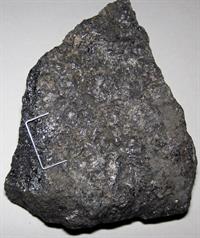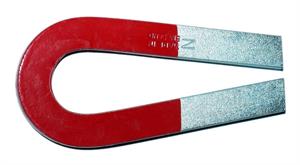PDF chapter test TRY NOW
Have you ever played with magnets? Do you know why it is attracted to iron? Humans have always found magnets to be appealing objects. In fact, famous scientist Albert Einstein has stated that he was always drawn to magnets as a child. In the olden days, magnets were used in ships. They were used effectively by ship captains to determine the ship's direction in the sea.
We can see two types of magnets in our environment:
- Natural magnets
- Artificial magnets
Natural magnets:
Natural magnets can be found in nature. Magnets of this type can be found in rocks and sandy deposits all over the world. Lodestone magnetite is the most powerful natural magnet. Natural magnets have a permanent magnetic property that never can be destroyed. In the past, lodestone magnets were used to make compasses.
Example:
Lodestone (leading stone), magnetite, pyrrhotite, ferrite, and columbite.

Natural magnet
Artificial magnets:
Artificial magnets are made by human beings. The magnets sold in stores are essentially artificial magnets. As we go along, we will learn about the properties of magnets, the magnetic effect of current, electromagnetic induction, and electromagnet applications in this chapter.
Example:
Bar magnet, horseshoe magnet, ring magnet, and needle magnet.

Horse-shoe magnet
Magnetic and non-magnetic materials:
The materials that are attracted towards a magnet are called Magnetic materials.
Iron, Nickel and Cobalt are called magnetic materials.
The materials that are not attracted towards a magnet are called Non-magnetic materials.
Plastics, Leather, Rubber and Paper are the example of non-magnetic materials.
Reference:
https://www.flickr.com/photos/jsjgeology/50952167407
https://commons.wikimedia.org/wiki/File:Horseshoe_magnet_by_Zureks.jpg
